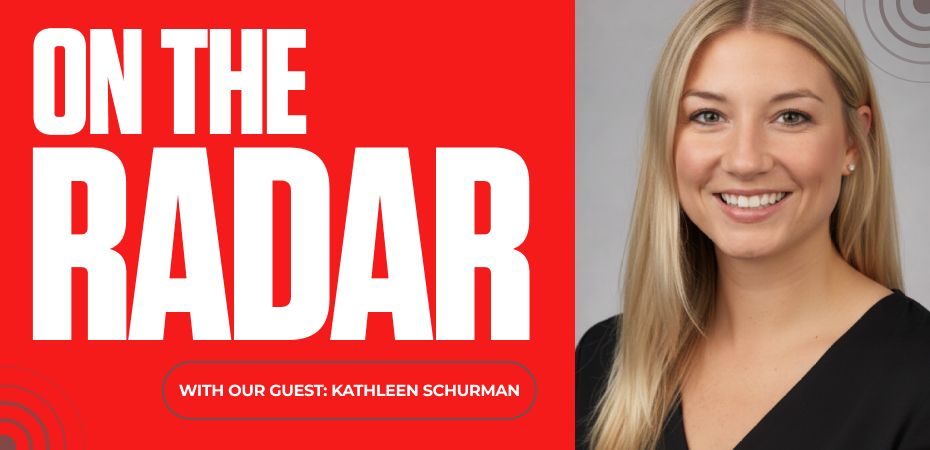November 25, 2025
| On the Radar | by Eileen Belden | Branding,
Content
Verisys’ Brian Krenzer on Why Doing Less is the Smartest Q4 Move

When Verisys, a healthcare data company focused on compliance and credentialing, set out to close the gap between what’s promised and what’s delivered, marketing became a central force in making that happen. Under the leadership of VP of Marketing Brian Krenzer, the team reoriented around what matters most: delivering a five-star customer experience at every touchpoint. That meant tighter alignment across sales, product, and partnerships—and a sharper focus on what actually drives value.
We caught up with Brian to dig into what that realignment looks like in practice: how his team is working across the business to protect customer trust, stay focused on what works, and turn even harsh feedback into a competitive edge.
Q: First off, we’re having this conversation in the middle of Q4. What’s your advice to marketers who want to finish the year strong?
Brian Krenzer
Right now, it’s actually the time to take one thing off your plate. People start to panic at the end of the year and think one more campaign will save the number. But you’re probably already stretched thin. So instead of throwing something against the wall and hoping it sticks, look at what’s working. Pick a few things and do them well. And honestly, if you're unsure whether you're going to hit your number in November, you probably already know the answer. Every once in a while, you pull a rabbit out of the hat. Most of the time? You're just pulling out felt.
Q: Building on the notion of prioritizing what actually works, how did that mindset influence the broader business realignment at Verisys?
Brian Krenzer
What really prompted the shift was a deeper look at our data. Some of our customers required significant deviations from our product roadmap, which made things harder on the teams delivering the work. So we refocused on customers who were aligned with our vision, those who were great partners, delivered better margins, and helped us move forward instead of sideways.
From a marketing perspective, we started focusing on customers who were more engaged, more responsive, and more aligned with how we communicate. It stopped feeling like shouting into the void. Some of our previous targets gave us almost no feedback. Indifference is the worst thing in marketing—it makes it hard to learn and grow. I’ll happily take, “I hate you and I hate your brand emails” over complete silence any day. The shift brought in more active prospects who were more engaged, and who gave us real signals about what was landing and what wasn’t.
Q: What are you finding lately that’s resonating?
Brian Krenzer
We’ve seen strong traction with some of the basics, like owned and operated channels such as email, organic social, and newsletters. We had underinvested in those areas, and once we leaned into subject matter expertise and deeper storytelling, the response was immediate. Outlining what we know and how we solve real problems has led to better conversations and new opportunities. We’re also getting a lot of mileage out of customer use cases. If one customer is using our data to solve a specific issue, chances are others are facing the same challenge.
If something works, we don’t drop it just because we’re tired of it. You have to repeat your message multiple times before the market even starts to notice. And by the time we’re sick of saying it, that’s usually when it’s just beginning to land.
Q: You’ve said everything at Verisys now revolves around a five-star customer experience. What does that look like across teams?
Brian Krenzer
Everyone at the company needs to care about the customer experience, from execs to client-facing team members. If leaders don’t care, it’s hard to expect anyone else to.
On the marketing side, that means listening to the market and to our customers. Our first NPS survey told us loud and clear: customers didn’t know what we were building or why. So we changed that. Now, every launch or feature update starts with a clear message: here’s what we heard, here’s what we’re doing, and here’s how it solves a real problem. That feedback loop has become central to how we operate.
Q: You have a small team. Any advice for marketers trying to do more with less?
Brian Krenzer
Get your data right, and then let it guide your priorities. It’s easy to want to be everywhere, but if you try to do everything, you’ll burn out and probably underperform. Focus on a few key channels, get good at them, and expand from there.
And give yourself permission to be bad at first. No one writes a perfect email series on their first try. You have to be willing to look back and cringe a little. That’s how you learn. If you’re not occasionally embarrassed by your early work, you probably didn’t grow.
If you’re looking for ways to strengthen your editorial and PR strategy, we’d love to hear from you. Reach out to our team to learn how REQ helps organizations like yours maximize the impact of your communications plan.

